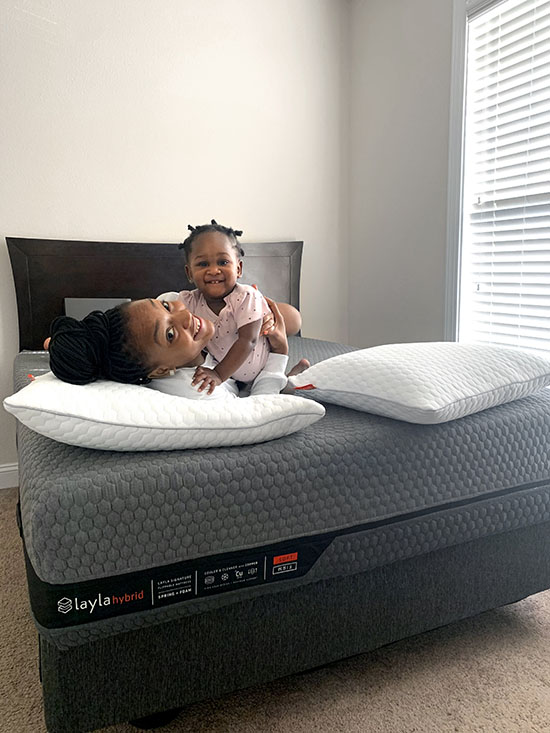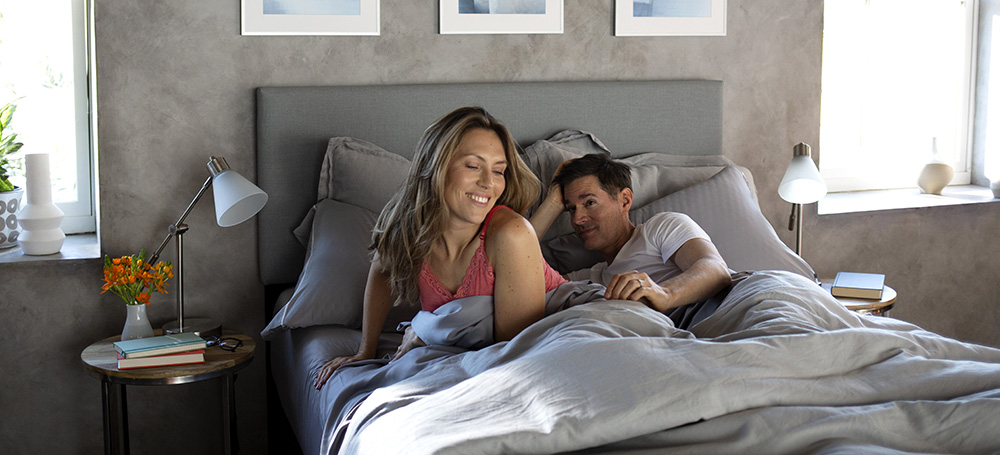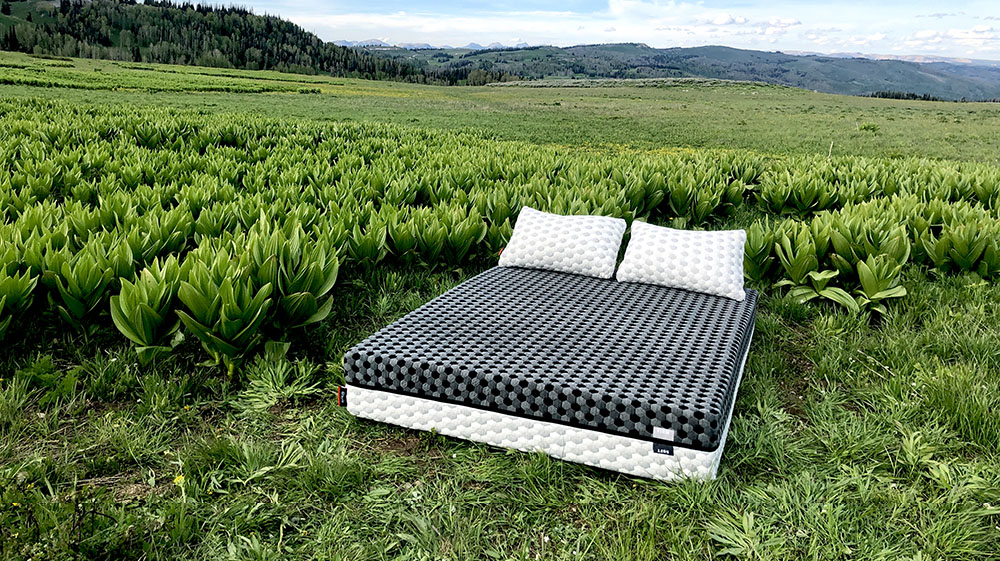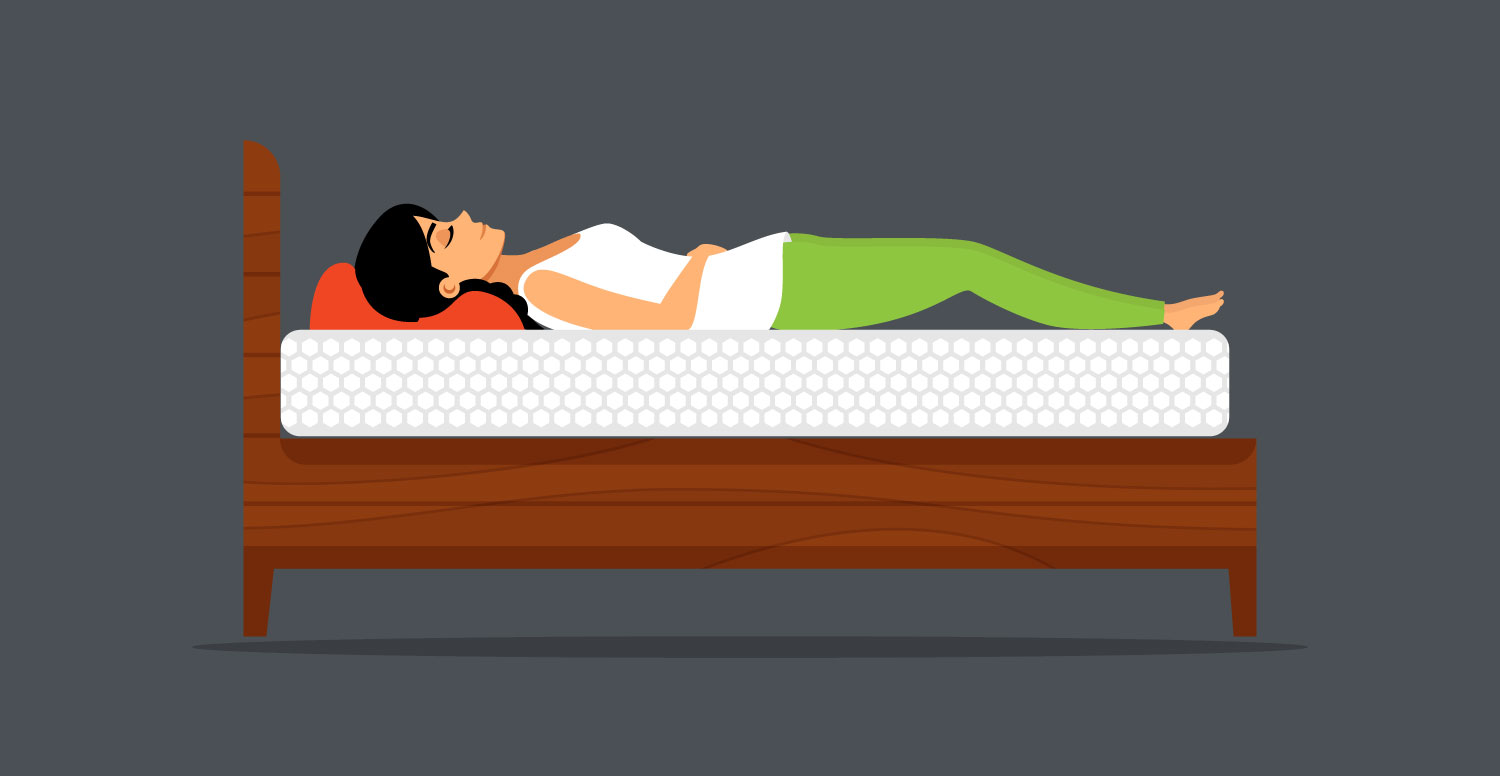
Best Mattress for Back Sleepers
Sleeping on your back isn’t the most popular sleeping position, that award goes to side sleeping. But if you’re a back sleeper, it’s important that you’re doing it right. Back sleepers require specific features from their mattress to get quality sleep.
If you’ve ever slept on a mattress where you can feel your midsection sink in, that’s a signal that you’re going to wake up with back pain. While we can’t guarantee that any mattress will encourage you to become a morning person and wake up beaming, the right bed can mean the difference between pain and comfort.
Sleeping on your back requires support to let your back muscles fully relax and contour to provide relief from pressure points – so, what’s the best mattress to get those dual features? Well, we will explore the answer in full below. Learn how to choose the best mattresses for back sleepers, how to choose complementary bed accessories like pillows, and read about healthy back-sleeping tips.
Best Mattress for Back Sleepers: How to Choose Your Mattress
When you’re ready to invest in a new mattress, it’s important to choose one that will be supportive and comfortable. Hone in on the features below to decide whether or not a particular mattress will work for you.
Firmness
Back sleepers only have one thing in common: their sleeping position. From small and petite to tall and robust, back sleepers come in all sorts of shapes and sizes. Heavier sleepers might want a little more firmness to avoid sinkage issues, while lighter sleepers might want a less firm sleeping surface. With that said, medium to medium-firm firmness levels are the safest choice for mattress firmness when it comes to sleeping on your back.
Your lower back in particular needs the right amount of support – this is a real Goldilocks conundrum for some sleepers. Too much or too little support can mean waking up with aches and pains after your first night of sleep.
Structure
A few decades ago, your mattress choices were very limited. These days, you have a veritable cornucopia of mattress options at your disposal.
The structure of your mattress will impact things like airflow. If a mattress has great air circulation, it will help keep you cooler while you sleep. This is important because your body needs to be cool in order to fall asleep in the first place. If you sleep hot, your body might have a hard time relaxing. In turn, you could have trouble falling asleep and wake up groggy and grumpy. Mattresses might have special layers, a lower number of adhesives in between layers, and an efficient layout to encourage airflow.
Lifespan
A new bed needs to last a long time – nobody wants to buy a new mattress every six months. It’s essential that the bed you choose provides you with solid support and comfort night after night. A mattress should stay intact for several years before you see wear and tear in the form of sagging or visible damage.
One way to figure out potential lifespan is if the company is a trusted brand name. It’s never a bad idea to read reviews and research the mattress company. Doing your due diligence can help you determine if a company is reputable or not.
Warranty
Although sitting or lying down on a mattress in a store can provide you with immediate physical feedback, it’s not the same as sleeping on it night after night. So, what are you going to do if a mattress that felt comfy in the store turns out to be a nightmare for your back after a few nights? Luckily for you, many mattress companies offer warranties, but they’re not all created equally.
When evaluating a mattress company’s warranty, pay attention to the warranty period, terms, and conditions. Although there are a few no-risk warranties on the market, some require you to pay a fee to either change or fix an existing mattress. Make sure you understand your purchase and the warranty in full before you sign on the dotted line and commit.
Cost
What’s the price of a great night of quality sleep? It’s hard to put a number on something so specific and valuable to our everyday lives. Sleep is when your body repairs itself and gets the rest it needs from your hectic daily schedule. Although price is likely to be a factor in your buying decision regardless, it shouldn’t be the only thing you consider during the process.
A good mattress doesn’t have to be exorbitantly expensive (we’re not all Kardashians, after all), but a price that seems too good to be true probably is.
Whatever you decide to spend is ultimately up to you, but your main focus should be investing in a mattress that’s the best possible fit for your lifestyle and needs.
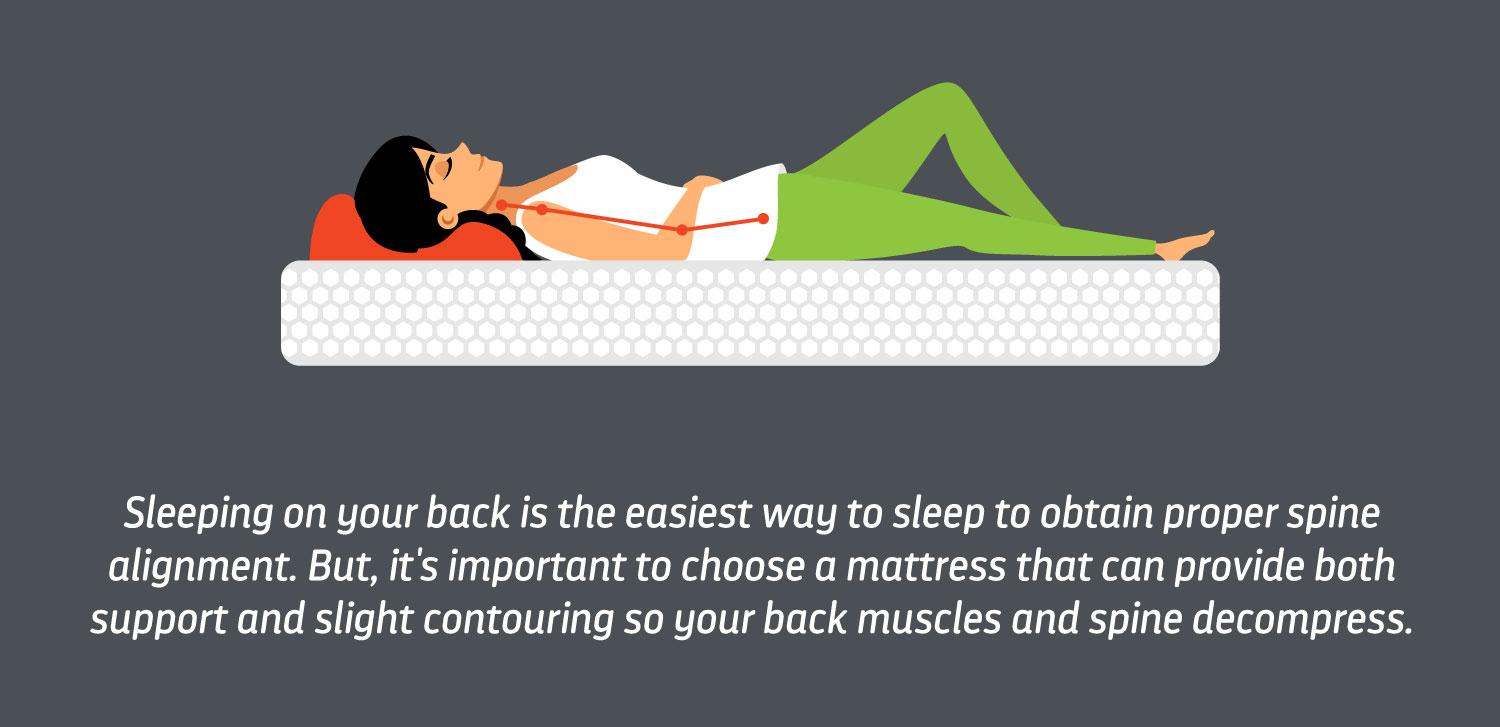
How Sleeping on Your Back Impacts Sleep
Sleeping on your back is one of the best ways to keep your body centered and your spine aligned as you sleep. Spinal alignment has an oversized impact on how you feel when you wake up. It refers to how well your spine lines up to its natural positioning, a gentle S-curve.
Sleepers who sleep in twisted positions can misalign their spines, resulting in morning aches and pains. However, there are many benefits associated with sleeping on your back, as well.
Health Benefits of Sleeping on Your Back
One study found that back sleepers might experience a reduction in wrinkles or breakouts since your face isn’t touching potentially bacteria-laden bedding or getting tugged or pulled when in contact with your bedding. Back sleepers may also experience a reduction in lower back pain since the back-sleeping position helps your back muscles relax.
Health Drawbacks of Sleeping on Your Back
Unfortunately, sleeping on your back isn’t all puppy dogs and rainbows. If you have sleep apnea or snore, sleeping on your back can make these issues considerably worse. In addition, if you have any type of acid reflux or GERD, you might experience a worsening of symptoms if you fall asleep on your back.
If you’re pregnant, finding a position that’s comfortable enough to sleep in can be difficult enough. Pregnant back sleepers might experience back pain because of their heavier midsection.
If you’re a back sleeper with back, neck, or shoulder pain, you might be sleeping out of alignment. This can happen if the mattress you’re using doesn’t provide support balanced out with comfort and softness. In turn, your back muscles and spine never fully decompress, which can lead to tense muscles and pain in the morning.
One major signal that your mattress isn’t giving you the support you need (and deserve!) is if you wake up feeling stiff or store, but it fades as the day goes on.
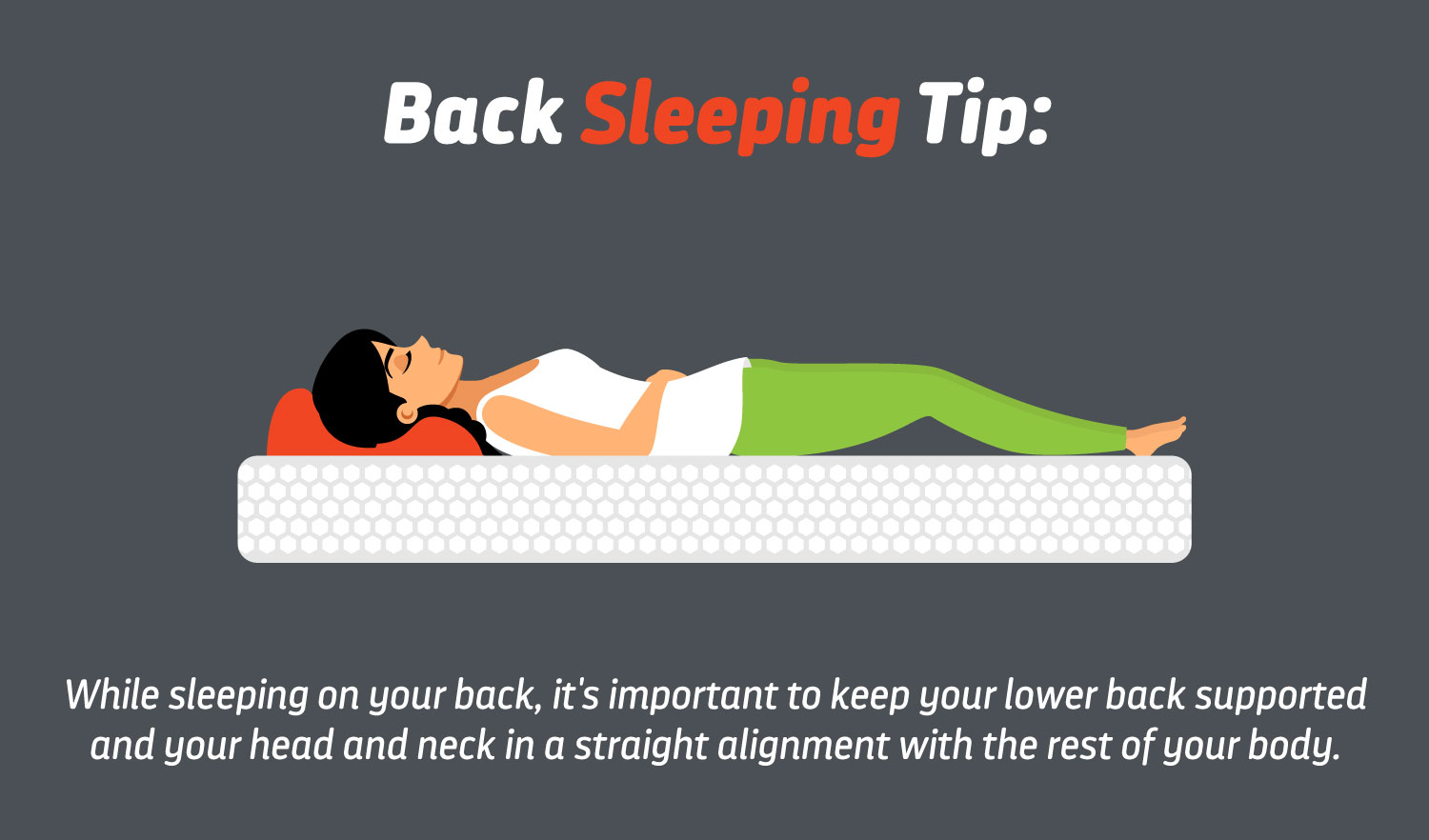
Best Type of Mattress for Back Sleepers
For many sleepers, back sleeping is the most comfortable way to get their snooze on. But just because you’re unconscious does not mean you can sleep fully worry-free just yet… you have to protect your back!
Think about it, when something’s wrong with your back, it can incapacitate you and leave you unable to move. Your back is involved in almost every kind of movement, so protecting it should be a priority – even as you sleep and dream.
Back sleepers have one main issue to deal with: proper spine alignment. In order to properly support the spine, back sleepers should search for a mattress that delivers hip and shoulder support, without applying excess pressure to your joints. Ideally, you’ll choose a flat, even sleep surface that can conform to your body without sagging.
Your ideal bed is an incredibly individualized concept that depends on your body shape, weight, lifestyle, and age. However, some mattresses are better than others. Below, we’ve evaluated several different kinds of mattresses for back sleepers and provided information to help guide you toward an appropriate choice.
Memory Foam Mattress for Back Sleepers
Back sleepers often find that their best sleep comes from a memory foam mattress. Foam mattresses contour to a sleeper’s body, without exacerbating pressure points. The Layla Memory Foam Mattress is an ideal choice for sleepers looking for a mix of comfort and foundational support.
Constructed with copper-infused memory foam that cradles and supports, this mattress is designed to keep you comfortable and cool throughout the night. Not sure where you land in the debate of a firm vs. soft mattress? You don’t have to choose with the Layla Mattress. It’s designed with flippable firmness – one side features an extra-plush softness, while the other side is firmer for those who prefer a bit more support.
And, if you’re worried about hygiene, copper is naturally antimicrobial and repels odor-causing bacteria. It’s a win-win, even if your partner isn’t a back sleeper.
Hybrid Mattress for Back Sleepers
Hybrid mattresses marry memory foam materials with traditional innerspring construction. The Layla Hybrid Mattress offers back sleepers an individually wrapped coil system that supports you throughout the night. It’s also crafted with copper-infused memory foam to keep you cool and comfy.
Just like the Layla Memory Foam Mattress, you can flip the Hybrid to either the soft side or the firm side, based on your personal preference. And, no matter where you sleep, you’ll get unbelievable support and contouring thanks to Layla’s superior edge support system – starfish sleepers, rejoice!
Airbed Mattress for Back Sleepers
Airbeds are basically synonymous with painful awakenings. As you might imagine, an airbed’s best strength is their adjustable firmness level. You can fill or let out as much air as you want to customize your firmness. Sometimes, there’s a pillow top layer with memory foam, cotton, or latex.
Unfortunately, airbeds leak air over time. So, while an airbed might feel comfortable at first, there’s a risk of serious sag that can occur overnight. This might mean a sore back for you in the morning.
Latex Mattress for Back Sleepers
Latex mattresses can be constructed from natural, synthetic, or blended latex foams. Latex tends to spread compression over a wider area, which leads to less sinkage and giving back sleepers decent support.
Sadly, the layers of latex can create a heat sink issue. If you’re already a hot sleeper, this can be a serious barrier to getting great sleep.
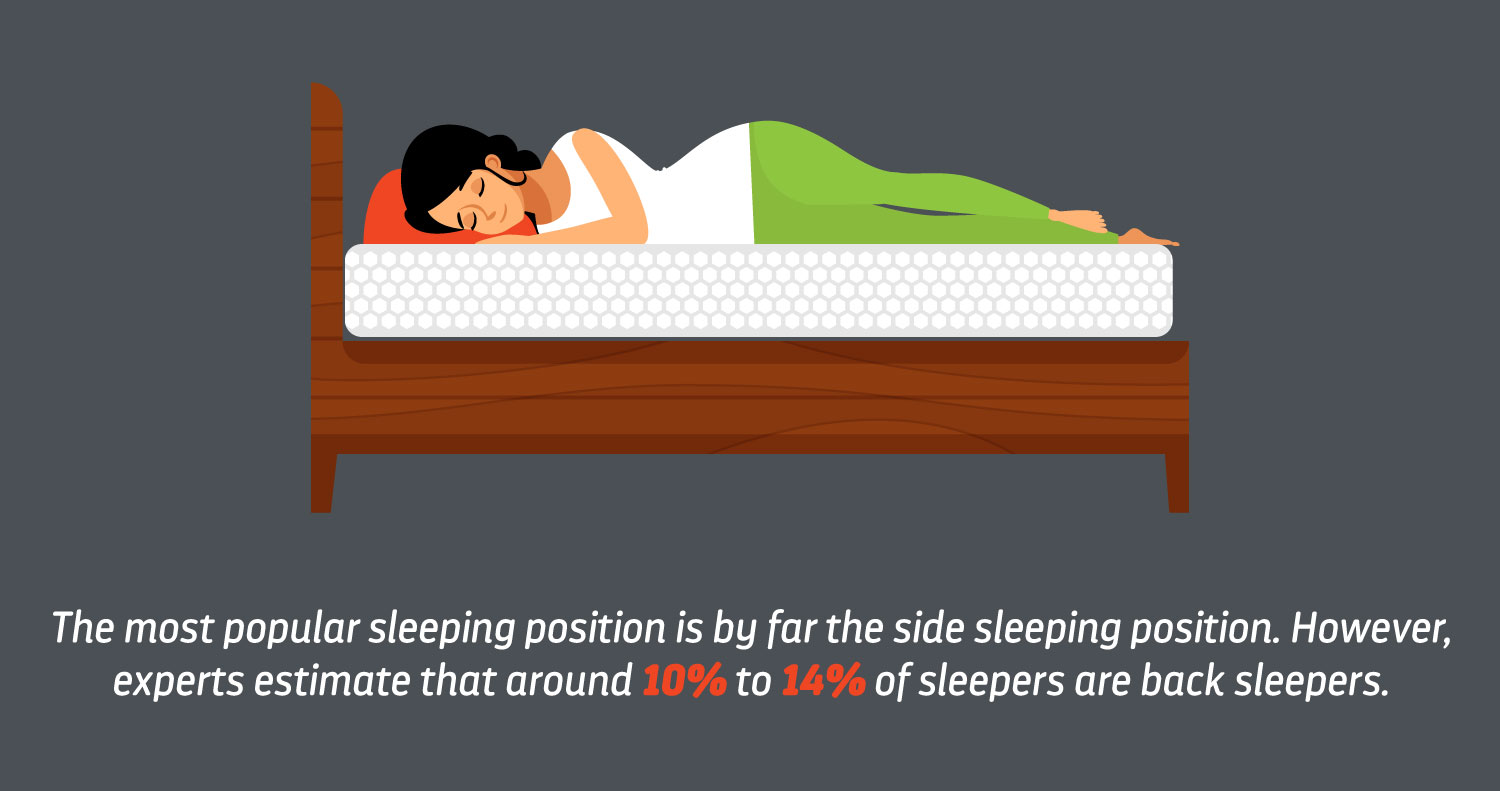
How to Sleep on Your Back
Okay, so you’ve got your new mattress – now, what? Well, we’ve assembled some tips for sleeping on your back to keep you feeling spry and vibrant.
- Keep your head up: We don’t just mean this as a positive affirmation, it’s also a literal instruction! Keep your neck supported at a height that supports your spine’s natural curve.
- Experiment with different back-sleeping positions: Is it more comfortable if you raise your arms over your head? Have you tried leaving your arms next to your body? Do you prefer a starfish position (sorry, bed companions, you gotta scoot over)? You might find that you sleep best on your back in a certain position, and you won’t find out until you try.
- Do some light stretching before hitting the hay: If you don’t practice good posture throughout the day, your body might react strangely when you lie down in your bed, and your spine is finally aligned properly. It can even cause pain if you’ve been hunched over, and suddenly, you’re stretched out. To combat this, try doing some gentle stretches to limber up those back muscles.
The Best Accessories for Back Sleepers
Just like a pine tree air freshener might be the finishing touch for your new car purchase, your new mattress purchase might need some accessories to complete your ideal sleeping environment. Here are a few accessories you might want to consider after your mattress investment.
Pillows
A mattress can have a huge impact on your spinal alignment, as we discussed earlier. But even if you have the perfect mattress that keeps your spine in a straight line, that can all be thrown out of whack with a bad pillow. After all, if your neck and head aren’t aligned, your entire spine can be misaligned as well. It’s critical to find a pillow that can support both your head and neck, so you don’t wake up with a crick or pain in your neck.
When evaluating potential pillows, check out the pillow’s loft—aka the pillow’s thickness. When a pillow has too much stuffing in it, back sleepers’ heads are forced toward their chest. On the other hand, a pillow that’s too thin can mean your neck is too stretched out. A medium loft pillow or one that you can adjust by removing or inserting more filling is a good choice.
Some back sleepers also enjoy placing a smaller pillow under their knees to reduce pressure on their spine.
Mattress Toppers
Although a new mattress will make the biggest impact when it comes to your overall comfort for back sleeping, a mattress topper can provide you with an additional layer of contouring comfort. You can also use a mattress topper to test out different materials you might want in a mattress too.
Mattress toppers can vary from thick to thin, and as you can probably guess, the thicker the topper, the more pressure-relieving effects it will have. One thing a mattress topper won’t give you is additional support and it, unfortunately, won’t work as a “band-aid” for a mattress that is showing serious signs of wear like sagging.
With all that said, mattress toppers can come in handy for back sleepers who just want a little bit more comfort.
Best Mattress for Back Sleepers: Frequently Asked Questions
Still have a few remaining questions after reading our guide? We got your back!
What’s the best sleeping position?
There is no “best” sleeping position, but back sleeping gives your body the best chance at proper spine alignment. With that said, side sleepers and stomach sleepers can still sleep in ways that don’t negatively impact their health, too. The most important part of your sleeping position is that it helps you get 7 to 8 hours of quality sleep!
Why Layla Mattresses over the other guys?
Layla Mattresses are designed to circumvent issues that plague other mattress brands. With Layla’s copper-infused memory foam and flippable firmness, sleepers can enjoy both peace-of-mind and comfort that lasts night after night.
When should I get a new mattress?
There are a few different signals that indicate it’s time for a new mattress. If you’re regularly waking up sore from your sleep or if your bed is sagging in the middle, those are two big red flags that your mattress isn’t holding up its end of the bargain. If you need a hard number, mattresses last between 7 to 10 years, depending on the type of mattress, your weight, and other lifestyle factors.

